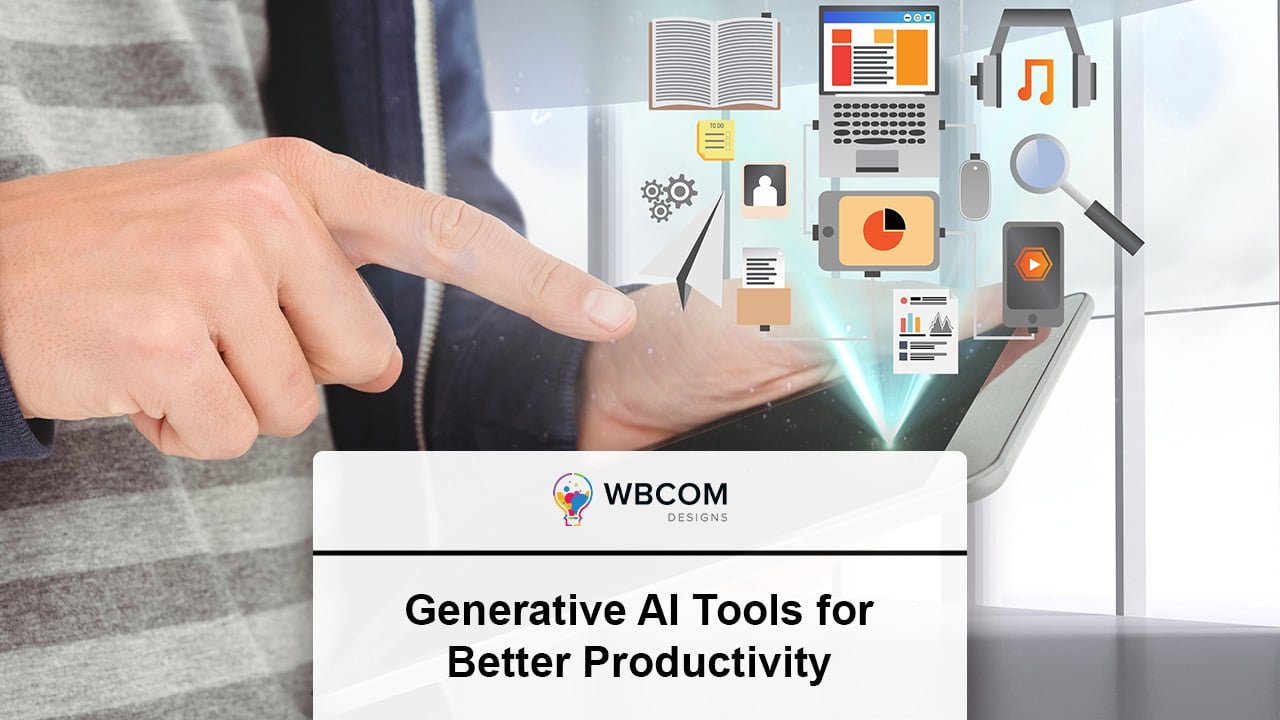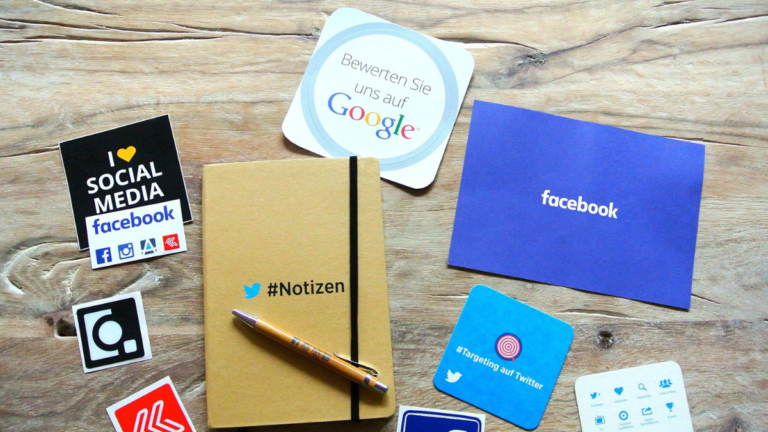Generative AI tools have revolutionized various industries by leveraging artificial intelligence to create new and innovative content, designs, and solutions. These tools use advanced algorithms to generate outputs that mimic human creativity and intelligence. In the realm of productivity, generative AI tools have emerged as valuable assets, empowering individuals and businesses to streamline their processes, enhance efficiency, and boost creativity. From generating personalized content to automating repetitive tasks, these tools offer a range of applications that can significantly improve productivity. In this blog, we will explore the concept of generative AI tools and delve into some of the best examples available in the market. Join us as we uncover how these tools can transform the way we work and help us achieve better productivity outcomes.
Table of Contents
ToggleBenefits of Generative AI Tools for Productivity
Generative AI tools offer numerous benefits for enhancing productivity in various fields. Here are some key advantages:
- Automation of Repetitive Tasks: Generative AI tools can automate repetitive and time-consuming tasks, freeing up valuable time for professionals to focus on more complex and creative aspects of their work.
- Creation of High-Quality Content: Generative AI tools can generate high-quality content, such as articles, blog posts, and social media captions, saving content creators significant time and effort.
- Acceleration of Design and Creativity Processes: Generative AI tools can assist in design and creativity processes by quickly generating design options, prototypes, or artwork variations, enabling faster iterations and exploration of ideas.
- Optimization of Decision-Making Processes: Generative AI tools can provide data-driven insights and recommendations, helping professionals make informed decisions more efficiently and accurately.
- Streamlining Data Analysis and Insights Generation: Generative AI tools can analyze vast amounts of data, identify patterns, and generate actionable insights, enabling businesses to extract valuable information quickly.
- Augmentation of Human Capabilities: Generative AI tools act as collaborative partners, augmenting human capabilities and extending creativity, problem-solving, and productivity to new heights.
- Scalability and Consistency: Generative AI tools can scale productivity by handling large volumes of work consistently and maintaining quality standards, ensuring efficiency and reliability.
Best Generative AI Tools For Better Productivity
1. OpenAI GPT-3
OpenAI GPT-3 is a powerful generative AI tool that uses deep learning techniques to generate human-like text, perform language translation, answer questions, and more. It has a wide range of applications and is known for its ability to generate coherent and contextually relevant content.
2. RunwayML
RunwayML is a generative AI tool that enables artists, designers, and developers to create and experiment with AI-powered models. It provides an intuitive interface and a library of pre-trained models for tasks such as image generation, text generation, style transfer, and more. With RunwayML, users can explore the creative potential of AI and enhance their productivity in various domains.
3. Artbreeder
Artbreeder is a generative AI tool that allows users to create unique and original artworks by blending and evolving existing images. Using a combination of deep learning and genetic algorithms, Artbreeder enables users to explore different artistic styles, generate new visuals, and remix existing artwork. It offers a creative and intuitive platform for artists and designers to experiment with AI-generated content and enhance their productivity in the realm of visual art.
4. DeepArt.io
DeepArt.io is a generative AI tool that transforms your photos or artwork into stunning, artistic masterpieces using neural networks. By leveraging deep learning algorithms, DeepArt.io analyzes the content and style of your input image and applies the artistic style of famous paintings or other images to create visually captivating results. With DeepArt.io, users can unleash their creativity, explore various artistic styles, and enhance their productivity by quickly generating unique and artistic interpretations of their original works.
5. DALL-E
DALL-E is a groundbreaking generative AI tool developed by OpenAI that combines the power of GPT-3 and a custom image generation system. It allows users to input textual descriptions and generate corresponding unique and creative images. DALL-E demonstrates the potential of AI to generate highly realistic and imaginative visuals that go beyond traditional image synthesis techniques. With DALL-E, users can explore new possibilities in creative expression, design, and visual storytelling, enhancing productivity and pushing the boundaries of what is possible in image generation.
6. Jukin Media’s AI Video Generator
Jukin Media’s AI Video Generator is a powerful tool that utilizes artificial intelligence to automatically generate engaging videos. It uses advanced algorithms to analyze and process video footage, identify key moments, edit clips, add effects, and create a cohesive and visually appealing final product. With Jukin Media’s AI Video Generator, users can save time and effort by automating the video creation process, allowing them to focus on other important aspects of their work. It’s an effective tool for content creators, marketers, and businesses looking to create professional-looking videos with ease and efficiency.
7. Algorithmia
Algorithmia is a platform that provides a wide range of AI algorithms and models that can be used to enhance productivity and solve various tasks. It offers a marketplace where users can access pre-trained models and algorithms, as well as deploy their own custom models. Algorithmia’s AI tools can be used for tasks such as image recognition, natural language processing, data analysis, and more. The platform provides an easy-to-use interface, allowing users to leverage the power of AI without the need for extensive coding knowledge. With Algorithmia, businesses and individuals can tap into the potential of AI to improve their productivity and achieve better results.
Real-World Examples and Case Studies
- Adobe Sensei: Adobe Sensei is an AI-powered platform that enhances productivity in creative tasks. It offers features like content-aware fill, intelligent image cropping, and automated video editing, allowing users to achieve better results in less time.
- Netflix: Netflix uses generative AI tools to improve its content recommendation system. By analyzing user data and preferences, it generates personalized recommendations, increasing user engagement and satisfaction.
- Google’s AutoML: Google’s AutoML is a suite of generative AI tools that enables businesses to build custom machine learning models without extensive coding knowledge. This empowers organizations to develop AI solutions tailored to their specific needs, improving productivity in various industries.
- Salesforce Einstein: Salesforce Einstein is an AI-powered platform that helps businesses enhance customer relationship management and sales processes. It leverages generative AI to automate tasks, provide intelligent insights, and predict customer behavior, enabling sales teams to work more efficiently and close deals faster.
- DeepMind’s AlphaGo: AlphaGo is a generative AI tool developed by DeepMind that defeated world champion Go, players. It showcases the power of AI in complex decision-making and strategic planning, demonstrating its potential to enhance productivity in various domains.
These examples highlight how generative AI tools have been successfully implemented in real-world scenarios to improve productivity, automate tasks, personalize user experiences, and optimize decision-making processes.
Also Read: Engage Your Community with these top-secret techniques
Limitations and Challenges
While generative AI tools offer numerous benefits for productivity, they also face certain limitations and challenges:
- Data dependency: Generative AI tools require large amounts of high-quality data for training. Obtaining and curating such data can be time-consuming and challenging, particularly for specialized domains with limited datasets.
- Bias and ethical concerns: AI models trained on biased or incomplete data can perpetuate biases or make unfair decisions. Ensuring fairness and avoiding discriminatory outcomes is a significant challenge in the development and deployment of generative AI tools.
- Lack of creativity and context understanding: While generative AI tools can produce impressive outputs, they often lack true creativity and may struggle to understand context, nuances, or emotions. This can limit their ability to generate truly unique or human-like content.
- Interpretability and explainability: Deep learning models used in generative AI can be complex and difficult to interpret. Understanding how the AI arrives at its outputs and explaining the decision-making process to users or stakeholders can be a challenge.
- Computational resources and infrastructure: Training and running generative AI models can require significant computational resources and infrastructure, including high-performance GPUs or cloud-based services. Accessing and managing these resources can be costly and pose technical challenges.
- Legal and copyright concerns: Generative AI tools can inadvertently generate content that infringes on copyright or intellectual property rights. Ensuring legal compliance and avoiding plagiarism is an ongoing challenge, especially when the tool generates content based on existing data.
Addressing these limitations and challenges requires ongoing research, development, and ethical considerations. Striking a balance between innovation, productivity gains, and responsible AI usage is crucial to maximizing the benefits of generative AI tools while minimizing potential risks.
Also Read: WordPress Plugins That Help In Doubling Your Website Traffic
Future Trends and Developments
Generative AI tools for productivity are continuously evolving, and several future trends and developments can be anticipated:
- Enhanced creativity and context understanding: Advancements in generative AI algorithms will likely lead to tools that exhibit more creativity and better understand context, enabling them to generate content that is more nuanced, human-like, and tailored to specific requirements.
- Improved data efficiency: Researchers are exploring techniques to train generative AI models with less data while maintaining performance. This could make these tools more accessible to a wider range of users and industries, even in cases where large amounts of training data are not readily available.
- Personalization and customization: Generative AI tools may become more adaptable to individual user preferences, allowing users to customize outputs according to their unique requirements. This could enhance productivity by delivering highly personalized and tailored content.
- Integration with existing workflows and systems: Future generative AI tools may seamlessly integrate with existing productivity tools and workflows, making them more accessible and enabling users to leverage AI capabilities within their familiar working environments.
- Ethical AI and fairness considerations: There will be a growing emphasis on addressing biases and ensuring fairness in generative AI tools. Researchers and developers will focus on mitigating biases, enhancing transparency, and implementing mechanisms to ensure the responsible and ethical use of these tools.
- Collaboration and co-creation: Generative AI tools may enable collaboration and co-creation among users, allowing multiple individuals to contribute and refine outputs in real time. This can enhance team productivity and foster a more interactive and dynamic creative process.
- Domain-specific generative models: As generative AI tools continue to advance, we can expect more specialized models tailored to specific domains or industries. These tools will provide more accurate and relevant outputs for tasks such as content generation, design, music composition, and more.
Conclusion
Generative AI tools have revolutionized productivity by leveraging advanced algorithms and models to automate and enhance various tasks. These tools, such as OpenAI GPT-3, RunwayML, Artbreeder, DeepArt.io, DALL-E, Jukin Media’s AI Video Generator, and Algorithmia, enable users to generate creative content, automate processes, and make complex tasks more efficient. By harnessing the power of generative AI, individuals, and businesses can streamline workflows, unlock new possibilities, and achieve higher levels of productivity. As technology continues to advance, we can expect even more innovative generative AI tools to further enhance productivity in various fields.
Interesting Reads:
5 Best AI Plugins For WordPress








